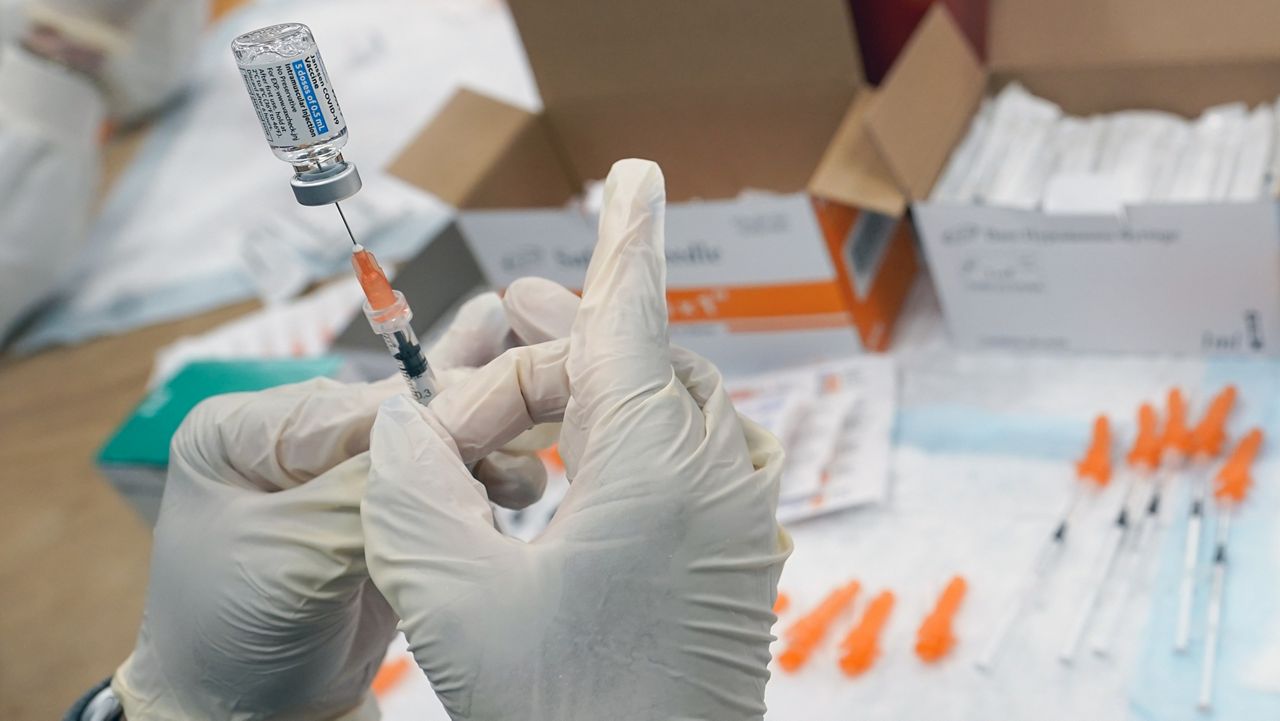The Biden Administration on Friday unveiled a 10 year, $65 billion plan to help the United States better combat future pandemics after COVID-19.
Officials likened the effort, drafted by White House science adviser Eric Lander and the National Security Council, to the Apollo mission to the moon. It even includes a centralized “Mission Control,” which would act as a single unit coordinating efforts from multiple departments to manage the mission.
“We have a tremendous amount to do for this pandemic, and we really have to think about creating capabilities that may take several years to develop, but they can be truly transformative for the next event that we will see surely in the coming decades,” Lander told reporters on a call.
The White House called on Congress to immediately allocate $15-20 billion in the $3.5 trillion budget reconciliation bill to jump-start the program. The Biden Administration initially called for $30 billion over 4 years in President Joe Biden’s original American Jobs Plan proposal.
The plan calls for:
- $24.2 billion for vaccines, including design, testing and authorization, large-scale rapid manufacturing capacity and simplifying distribution, including eliminating cold-chain transportation requirements
- $11.8 billion to develop new therapeutics, including ensuring large-scale, programmable manufacturing capacity for monoclonal antibodies
- $5.0 to develop and expand diagnostic capabilities
- $3.1 billion for early warning systems and technologies
- $2.3 billion for real-time monitoring
- $6.5 billion to strengthen the U.S. public health system
- $3.1 billion for personal protective equipment
- $2.1 billion to refill depleted stockpiles and strengthen supply chains
The cost, the White House says, is “modest” compared to the cost of what the U.S. spends on missile defense and combatting terrorism — and the toll the COVID-19 pandemic has wreaked on the U.S. economy.
“The required investment is modest relative to other efforts to create the capabilities needed to protect the Nation against important threats: the annualized cost would be much smaller than what the U.S. spends on missile defense ($20 billion/year) and on preventing terrorism ($170 billion/year),” the plan reads.
“In addition to protecting American lives, the annual investment is strongly justified from an economic standpoint: If major pandemics similar to COVID-19, costing the U.S. roughly $16 trillion, occur at a frequency of every 20 years, the annualized economic impact on the U.S. would be $800 billion per year,” officials continued. “Even for somewhat milder pandemics, the annualized cost would likely exceed $500 billion.”
Progressive Sen. Elizabeth Warren, D-Mass., along with Sens. Sherrod Brown, D-Ohio, Kirsten Gillibrand, D-N.Y., Ed Markey, D-Mass., Tina Smith, D-N.M., Richard Blumenthal, D-Conn., and Dianne Feinstein, D-Calif., called on Congressional leadership in July to include “at least” $30 billion “to prevent and prepare for future pandemics.”
“The COVID-19 pandemic has made clear that underinvesting in our public health infrastructure, our biomedical research pipeline, and our medical supply chain has disastrous consequences,” a letter from the lawmakers reads. “A robust investment in pandemic prevention and our underlying public health system is critical as the country continues to recover from COVID-19.”
The plan, detailed in a report entitled “American Pandemic Preparedness: Transforming Our Capabilities,” has five major goals:
- Expanding and improving the nation’s arsenal of vaccines, diagnostics and therapeutics;
- Improving early warning and real-time monitoring of infectious disease threats;
- Strengthening public health systems, “with a particular focus on reducing inequities and protecting the most vulnerable communities";
- Building up supply chains and stockpiles, including personal protective equipment; and,
- “Managing the Mission, with seriousness of purpose, commitment, and accountability akin to the Apollo mission, which brought our astronauts to the moon decades ago”
“If you’re getting to the Moon and you have a great booster rocket but you haven’t got a capsule capable of landing or computers capable of directing, it’s not going to work,” Lander said of the Mission Control concept.
“Because transforming our capabilities will take time, it is imperative that we start now,” the White House said.



